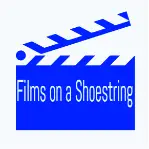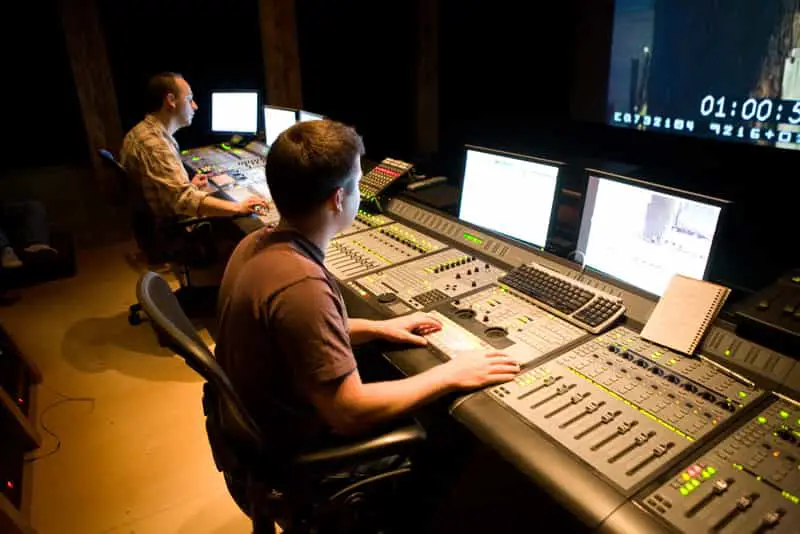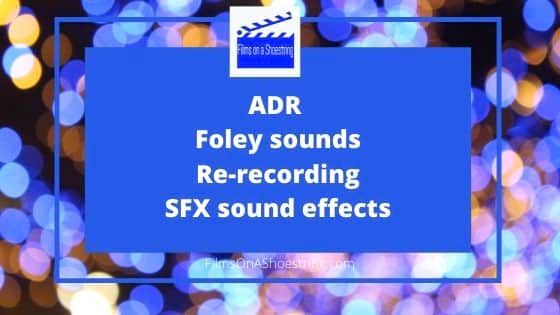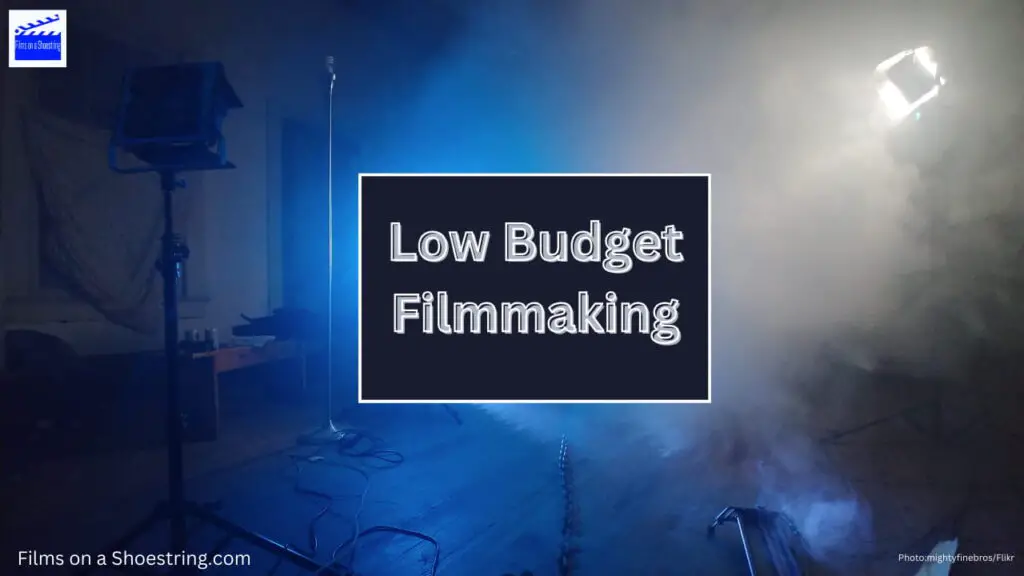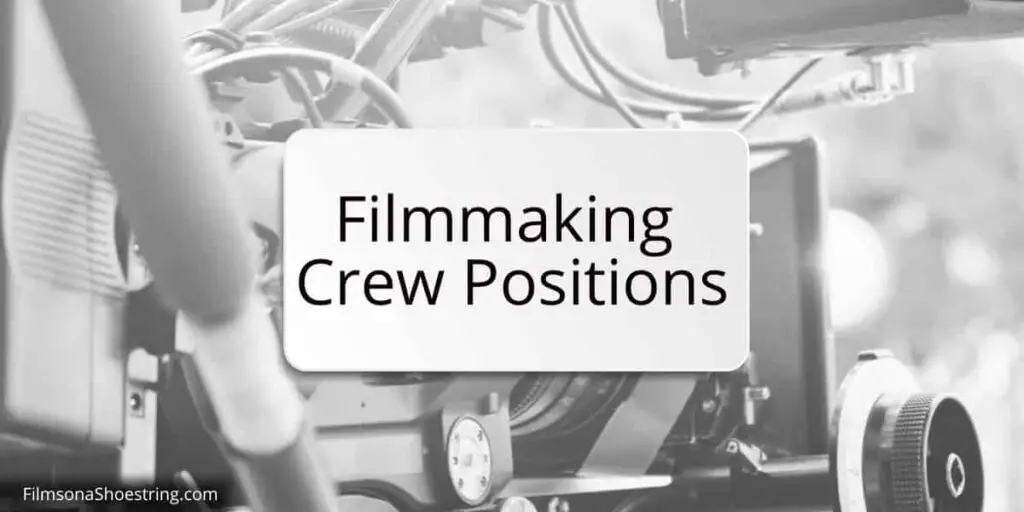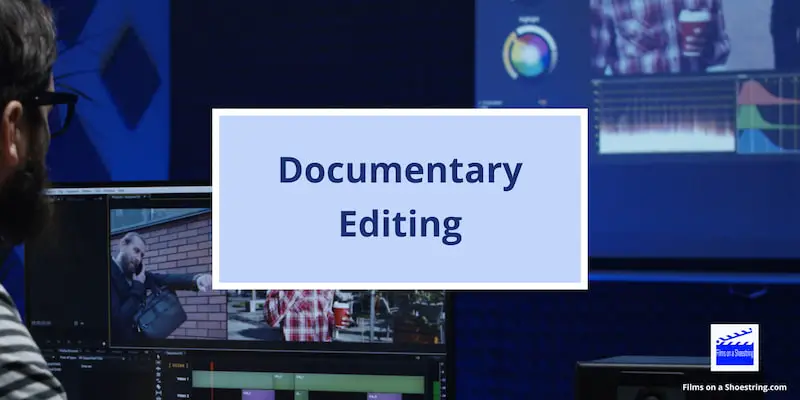ADR, Foley sounds, rerecording and SFX sound effects bring life to the action on screen. Don’t assume this is something reserved for big budget movies – every short film benefits from this valuable craft.
You can easily overlook the importance of sound effects and clear dialogue while recording a student or zero budget film. But their absence makes a real and discernible difference to the audience experience. Also, random noises such as passing aircraft, emergency sirens and the runner’s vibrating phone are picked up – no matter how hard you try to avoid them.
Let’s take a look.
Contents
What does ADR stand for in film?
ADR in film production stands for Automated Dialogue Replacement, and means the studio process of re-recording or adding dialogue after filming has ended. It’s also known as looping and usually happens to clean up the sound quality or change the delivery of lines.
ADR Terminology includes:
- voice replacement – replacing an actor’s voice, the most notable example being the voice of Darth Vader (James Earl Jones instead of actor David Prowse) in Star Wars 1977
- voice matching – a voice actor sounding like the original character; usually for new lines and an unavailable screen actor
- Visual ADR – the actor watches the scene they are rerecording
- Audio ADR – the actor only listens to the scene they are rerecording
How does ADR work?
ADR (Automated Dialogue Replacement) happens after filming.
Work starts on unedited visual and sound footage, called rushes, daily rushes or dailies. Problems with sound quality are quickly reveal themselves. Dialogue change usually happens further into the editing process.
Actors come into the studio for rerecording.
This Shutterstock Tutorial shows you what rerecording looks like in the studio.
What is a loop group in film?
A loop group is a collection of voice actors who gather in a studio to record indistinct background crowd noise during post production. It’s often referred to as ‘Walla’ (US) or ‘Rhubarb’ (UK).
They watch the scene and provide background chatter, often mirroring one or two of the extras in the scene background.
- Walla (US), Rhubarb (UK) terminology includes
- Call outs – “Bravo!”
- Specifics – asking a waiter what’s on the menu
- Pick-up – the waiter walks by
- Bed – layers of clapping, cheering, singing or screaming
What is an ADR engineer or an ADR mixer?
ADR engineers and ADR Mixers work in the film industry carrying out the Automated dialogue replacement (ADR) process of re-recording dialogue. Because they are recording engineers, they also record voiceovers for films, tv and gaming industry productions.
Once the director, sound team and dialogue editor have viewed the film and audio well into the editing process and identified the dialogue which needs improving, altering or replacing, the ADR mixer receives the film and new script.
Meanwhile the actors receive the new script.
It’s the ADR mixer’s job to record the actor delivering the new lines, communicating cues and checking delivery of each line falls into the correct position in the screen action.
The energy of film sets means actors tend to speak at a higher pitch than in the studio, where their body and head are also more stationery. ADR engineers and mixers watch out for this, also checking that the microphone used, its distance from the actor and the ambient noise all reflect those elements of the set.
Each line is recorded several times. The ADR mixer and sound supervisor assess each recording to identify the best one.
What are Foley sounds?
Foley recording occurs after filming has ended. Foley sounds artificially reproduce sounds caused by human action in a specific scene. Examples are walking on snow or stirring coffee. the Foley artist performs and records in a studio. Once added to the sound track, the audience hears sound effects to match the screen visuals.
Are Foley sounds vocal?
Foley sounds can be vocal and include actors sighing, coughing, snoring or grunting. But Foley sounds do not include dialogue. The ADR (Automated Dialogue Replacement) process takes care of dialogue.
What is the difference between sound effects and Foley?
Sound effects are recorded at any time and can be used on a variety of occasions or projects. In contrast, Foley artists perform to the action seen on screen. That’s because it reflects the actions of that one person in that specific scene.There can be overlap between the two functions and role separation depends on project budget.
What is a Foley artist, a Foley mixer and a Foley Editor?
Foley is part of the post production process, after filming has ended.
A foley artist watches actors on screen and mirrors their actions, while creating realistic sound effects.
A foley mixer edits the foley sound and adds it into the sound track. Find out more in what does a foley mixer do?
In the low and zero budget film work, financial constraints limit the design, scheduling, production and editing processes of Foley sound. One person might do it all. They may also have a number of roles on the project.
For large scale films a Foley team collaborates to design, schedule, & produce the sounds, often working with SFX specialists too.
Why is Foley sound and artists important?
Foley sound is carefully timed, reflecting what people do on screen.
It’s difficult to get all the required sound effects picked up clearly on the microphone during filming. Especially where several things are happening at once, sounds are lost as others dominate.
Foley artists know which sound effects add depth and relevance to a scene, and how to perform them.
When did Jack Foley invent Foley sounds?
Jack Donovan Foley (April 12, 1891 – November 9, 1967) worked in the film industry from the 1920s until the 1960s. He was the first person to perform post production sound effects in front of the footage to add depth to the characters on screen.
Jack was the New York grandson of Irish immigrants. He left his job as a general order clerk at the New York Docks, and moved to California to work as a stunt man in a small movie studio during the era of silent films.
He worked his way up to become a director and script writer. With the emergence of the talkies, Jack Foley built a reputation for adding sound effects to human action shown on screen.
Foley trained his crew to reflect the character in the sounds they created. Whether it was footsteps or slamming doors, the sound was specific to the individual personality on screen. So the Foley artists performed the characters they watched as much as they created well timed sounds.
What is re recording in movies?
During filming, the microphones pick up actor dialogue. In post production, re recording creates the soundtrack to accompany the visuals. That means adding music, sound effects, background vocals, cleaning out unwanted noise, and clarifying or changing dialogue.
Re recording on student film
Working on a zero budget? You can’t afford the teams of professionals that make sound so clear and natural on well funded movie and TV productions. But you can experiment to remove unwanted background noise, add decent SFX and foley effects, and make dialogue clear.
They are small changes which will have a significant impact on the final quality of your film. Moreover, the experience teaches you some invaluable skills for future work and projects.
What is SFX sound effects?
SXF stands for special effects. SXF sound effects are produced in a recording studio and added to the sound track after filming has ended, but before Foley.
SFX sound effects create the sound made by action or events not caused by human action. Examples are thunder or wolves howling. You record SFX sound effects without performance to the visuals, unlike Foley.
Find Sound Effect Collaborators
Next time you’re in post production, start experimenting with these sound improvements and discover why they form such an important part of every professional production.
With a budget, you can recruit your pick of professional sound effect artists from a range of industry platforms. If you can pay, make sure you do.
For students and microbudget filmmakers, lack of resources prohibits this. Instead, collaborate with volunteers holding enough skills and access to equipment complete the work to an acceptable level.
Facebook Groups offer one way of finding volunteers.
In return, you must complete and release the project, ideally via film festivals. Get an IMDb page set up and ensure everyone is included. That way the sound volunteer gets an IMDb credit and showreel for their portfolio.
Latest filmmaking posts
Further Reading
Head to the Filmmaking page to see a list of articles for filmmakers.
Photo Credit: “Sound Design for Visual Media and Film Production students at dbc sound” by Vancouver Film School is licensed CC BY 2.0
